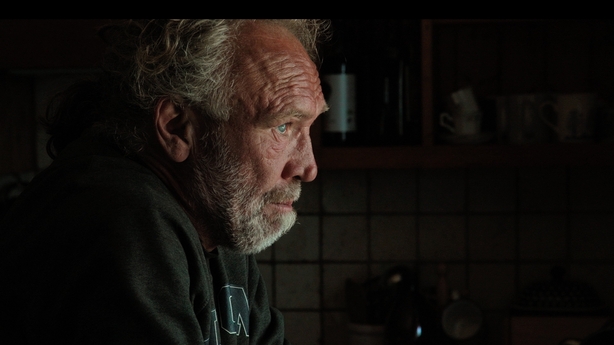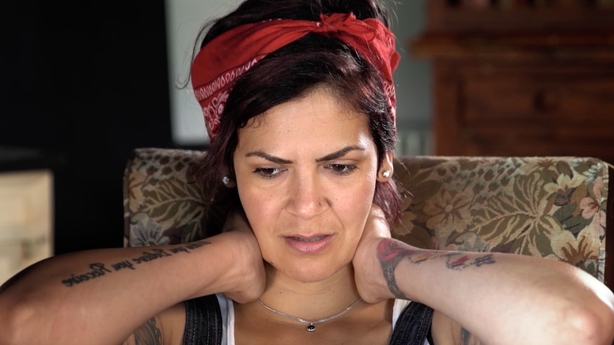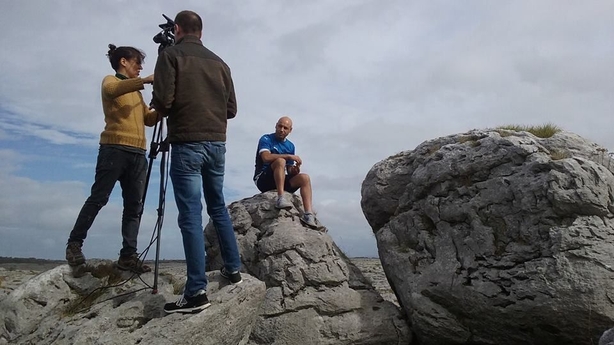Writer and director Treasa O'Brien, writes for Culture about her new film Town of Strangers, a 'documentary of the imagination' shot in Gort, Co. Galway, going deep into the experience of dreaming, migration and home.
They say there are only two stories worth telling: a person goes on a journey; and a stranger comes to town.
When I made Town of Strangers I was searching for a cinematic language that would transcend the binary of documentary and fiction to find a way to express the lived experiences of people who have undergone displacement through migration or through a hybrid cultural identity. The resulting film is a 'hybrid' feature film using auditions, observational documentary and magical realist dream scenes. It is a documentary of the imagination, with many scenes transcending the genres of documentary and fiction.

I was a Kerry woman living in London when I first started visiting Gort. I was developing a fiction script that was set in Gort, and I went looking for local actors and stories to involve them in my story. At that time, the town of Gort boasted two remarkable statistics: it was the town with the most nationalities in Ireland, relative to its small population (2994); and it was the town ‘worst hit by austerity’. I did not yet know what form that film would take but I knew it would not be a ‘straight’ documentary nor a fiction. I was searching for a cinematic language that would transcend the binary of documentary and fiction and find a way to express the lived experiences of people with hybrid cultural identities. I wanted to incorporate stories from the town and potentially cast first-time actors as themselves. In the audition poster, I asked people to tell me ‘dreams, lies, memories and gossip’.
We need your consent to load this rte-player contentWe use rte-player to manage extra content that can set cookies on your device and collect data about your activity. Please review their details and accept them to load the content.Manage Preferences
Listen: Treasa O'Brien talks Town of Strangers on RTÉ Arena
The auditions, however, irrevocably changed the course of the film. I was astonished and humbled by the people that I encountered that day, and how they related to me and to the camera as witnesses to their truths. People showed their strengths and vulnerabilities in a way that moved me. The more I got to know the people from the auditions, the more I adapted and improvised the film. I soon left the fiction script far behind and, together with some of the people I met, we went on a cinematic journey to explore their waking and dreaming lives in what became a documentary of the imagination. I was doing a PhD in Film Practice concurrently with making Town of Strangers, with Oscar-nominated director Joshua Oppenheimer as my supervisor and Executive Producer of the film. His methods of ethnofiction and re-enactments informed my method of filmmaking and we held long conversations about what happens when you allow the film to be the catalyst by which meaning is produced, rather than to limit yourself to factual or observational methods. By inviting the participants to enact their dreams and memories, I was documenting the process of this imagining, rather than trying to create a result. Sometimes it is these ‘making-of’ scenes that are the most revealing of the film.
Town of Strangers is a poetic film that experiments with form and it is also a human rights film. It is a cinematic and philosophical exploration of the lived experiences of ‘the other’, people who make their home in a small town in the west of Ireland, in the age of austerity politics, the refugee 'crisis', and the rise of nationalism and rightwing politics in Europe and the USA.

I had spent time working in refugee camps in Greece and Calais in the winters over the three years of making this film and had made several short films about the journeys people were making, working with them as co-creators. Town of Strangers explores the aftermath - the shifting sand between the migrant’s longing for home, and their efforts to belong in their new home.
Ireland’s history has been one of mass emigration with more people with Irish passports abroad than in Ireland. Many Irish emigrants have experienced racism and xenophobia, and a longing for home. Our songs are full of this longing. In the past two decades, that trend has changed as Ireland has experienced immigrants into the country, changing what Irish small town life presumes itself to be and changing our perception of ourselves. In this film, migrants, Travellers, refugees, hippies and even the director herself are both insiders and outsiders. The film is also newly relevant in the context of the Covid-19 pandemic, in its exploration of social isolation and longing for human connection.

What I learnt from making this film is that we are all running from something - losing and finding ourselves over and over. We think we encounter characters when we watch films but ultimately we encounter ourselves. Was each person that I was filming somehow playing a different part of myself? Had I been drawn to each person not because I needed to meet them but because I needed to meet myself in them?
I am Ana when I am lonely, I am Elham when I miss my mother, I am Ralf when I am feeling reckless, I am Chloe trying to fit in and ready to run away, I am Dido making my home in a chair, I am Rosa when I am strong, I am Rowan when I am vulnerable and I am Hamid running in the Afghan hills of the Irish Burren.
It occurred to me that perhaps I was the stranger who came to town and went on a journey once I arrived. Making Town of Strangers eventually led me to come home.
Town Of Strangers is available to view exclusively on IFI@Home - find out more here.
